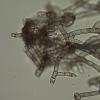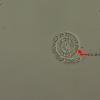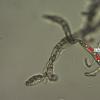
10-09-2025 23:53
 Marcel Heyligen
Marcel Heyligen
Found on Robinia pseudoacasia together with Diapor

10-09-2025 17:18
 Blasco Rafael
Blasco Rafael
Hola, encontre este estiercol de vaca estos apotec

03-09-2025 21:59
Philippe PELLICIERLa Léchère, Col de la Madeleine, alt 1970m, au s

07-09-2025 11:34
 Zuzana Sochorová (Egertová)
Zuzana Sochorová (Egertová)
Hello,I have identified this fungus as Hymenoscyph

02-09-2025 11:34
Thomas Læssøehttps://svampe.databasen.org/observations/10527903

05-09-2025 09:32
 Nicolas VAN VOOREN
Nicolas VAN VOOREN
Bonjour, hi everyone,Do you know where the fungari

Dear Forum,
On rotten wood of Salix sp. in a moist place I found a helicosporous hyphomycete with branched well-developed conidiophores, brown and septate.The hyaline hollow conidia were coiled in two dimensions and measured 15-18µm.
Using the work of Zhao(2007), the keys brought me to the genus Helicosporium.
Could someone confirm this and eventually give me the right taxon?
Marc
Saludos cordiales

Dear Josep and Chris,
Thank you for your comments and the magnificent article of Goos.
I combined the keys and descriptions of Goos and Zhao. The branched and anastomosing conidiophores, the large denticles (3.5-4.1µ), the large conidial filaments (2.5-2.9µ) and the larger conidia (18-23µ) brought me to Helicosporium lumbricopsis.
Could you agree?
Marc

Sigo pensando en el Helicosporium griseum = Helicosporium lumbricoides
Saludos cordiales.
Josep

Using Goos and Zhao we have to choose between H griseum and H lumbricopsis.H griseum is a commonly found species, reported worldwide. In general it has smaller conidia and smaller filaments compared to H lumbricopsis, which is known as a tropical and subtropical species.
Following Linder(1929) and Moore(1955) the differences between the two species were more environmental than morfological.
H griseum with larger than normal dimensions does not seem unlikely.
Marc
Bonjour Marc,
J'ai déjà été confronté à ce type de récolte. Les études citées sont de bonnes études, sérieuses, mais ne peuvent être suffisantes. En particulier je pense que la connaissance de ces champignons en Europe est insuffisante, et que par conséquent il peut être hasardeux de se baser sur une comparaison seulement morphologique avec les espèces citées par ces études originaires d'Asie pour donner absolument un nom. Avec des données moléculaires, ce serait déjà moins aléatoire.
Alain


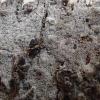
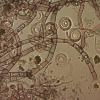
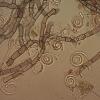
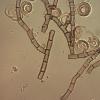
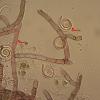
 Helicosporium-1989-v81-p356a-0001.pdf
Helicosporium-1989-v81-p356a-0001.pdf